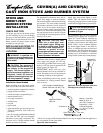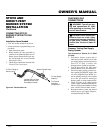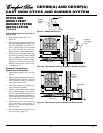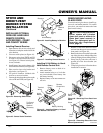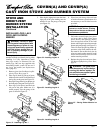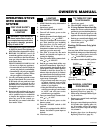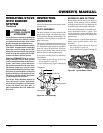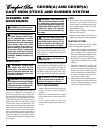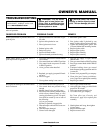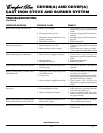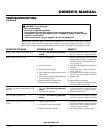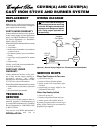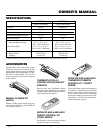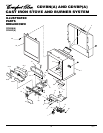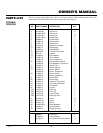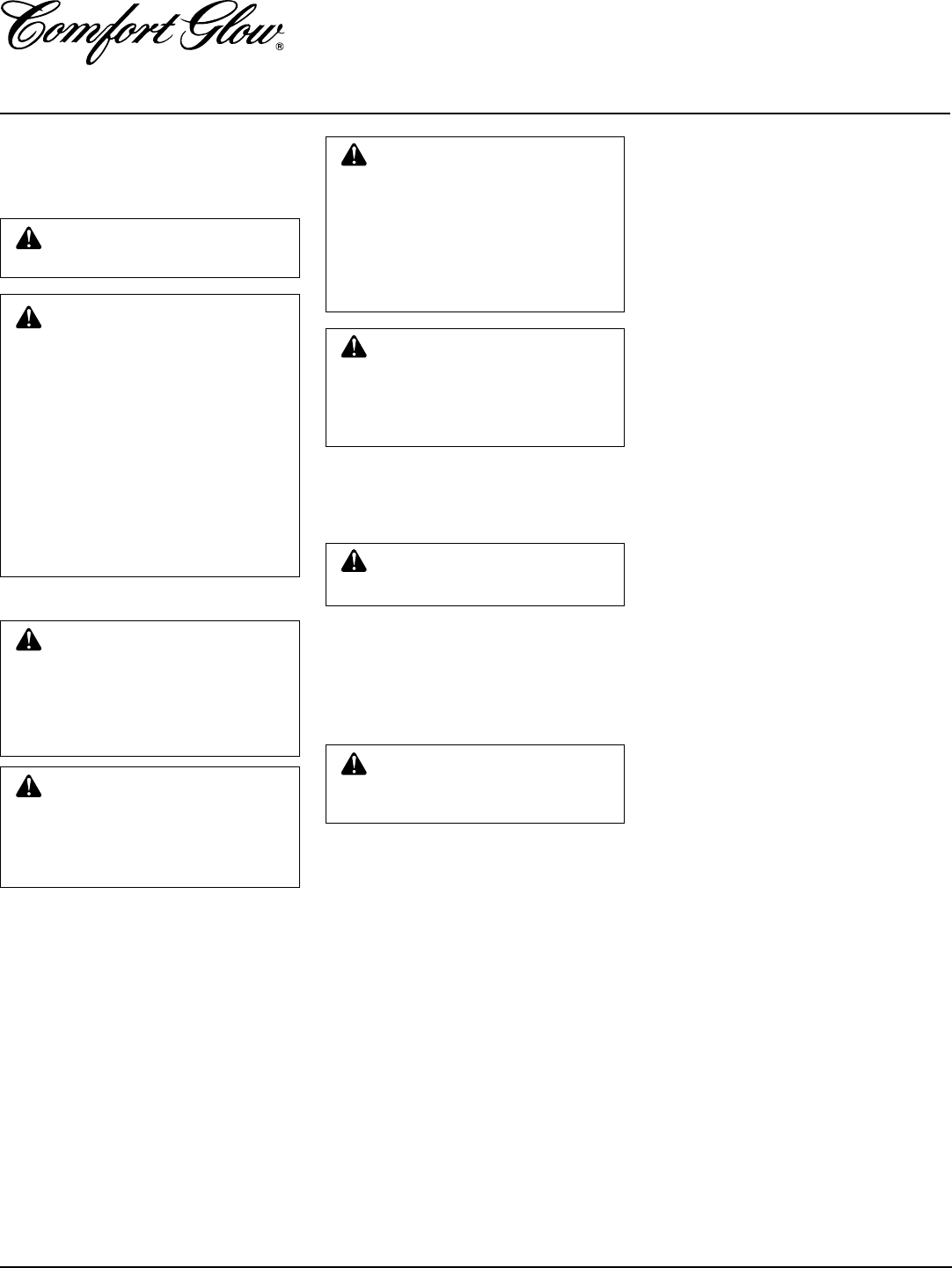
26
CAST IRON STOVE AND BURNER SYSTEM
105501
CDVBN(A) AND CDVBP(A)
CLEANING AND
MAINTENANCE
WARNING: Turn off burner sys-
tem and let cool before cleaning.
CAUTION: You must keep con-
trol areas, burners, and circulat-
ing air passageways of burner
system and stove clean. Inspect
these areas of burner system and
stove before each use. Have
burner system and stove in-
spected yearly by a qualified ser-
vice person. Burner system and
stove may need more frequent
cleaning due to excessive lint from
carpeting, bedding material, pet
hair, etc.
WARNING: Do not use abra-
sive cleaners as this may damage
glass. Use a nonabrasive house-
hold glass cleaner to clean glass.
Do not clean glass when hot.
WARNING: Handle glass
door panel with care. Do not
strike, slam, or otherwise abuse
glass. Do not operate burner sys-
tem with the glass door removed,
cracked, or broken.
GLASS DOOR
Glass must be cleaned periodically. During
start-up it is normal for condensation to
form on the inside of the glass causing lint,
dust, and other airborne particles to cling to
the glass surface. During initial start-up a
slight film may form on the glass due to
paint curing. The glass should be cleaned
several times with a non-ammonia, non-
abrasive household cleaner and warm water
after the first two weeks of operation. There-
after, clean the glass two or three times
during each heating season, depending on
the usage and circumstances present. Refer
to Removing/Replacing Glass Door on page
21 of this manual when removing glass door
for cleaning.
PILOT AND BURNERS
• Remove ember material before cleaning
burners and replace when cleaning is
complete.
• Burner and controls should be cleaned
with compressed air to remove dust, dirt,
or lint.
• Use a vacuum cleaner or small, soft
bristled brush to remove excess dust, dirt,
or lint.
WARNING: Only parts sup-
plied by the manufacturer should
be used when replacing broken
or damaged glass door panel (see
Replacement Parts
, page 30). This
glass door panel is a complete
unit. No substitute materials may
be used.
If glass has been broken, carefully remove
glass door (see Removing/Replacing Glass
Door, page 21). Vacuum all glass pieces
with a shop vac.
CAUTION: Wear gloves and
safety glasses while handling or
removing broken glass. Do not
remove if glass is hot. Keep chil-
dren and pets away from glass.
WARNING: Do not operate
burner system with the glass door
removed, cracked, or broken.
Use only the ceramic glass door replace-
ment intended for this burner system (see
Replacement Parts, page 30 for detail on
ordering). No substitutions may be made.
See Removing/Replacing Glass Door, page
21 for instructions for replacing glass door.
CAUTION: Do not vacuum if
pieces are hot.
LOGS
• If you remove logs for cleaning, refer to
Installing Logs, Lava Rock, and Glowing
Embers, page 22, to properly replace logs.
• Use a vacuum cleaner to remove any car-
bon buildup on logs.
• Replace log(s) if broken. See Replace-
ment Parts on page 30.
• Replace ember material periodically as
needed. See Replacement Parts on page 30.
VENTING SYSTEM
Conduct annual inspection of the venting
system following these guidelines:
1. Check areas of venting system that are
exposed to the weather for corrosion (rust
spots or streaks and, in extreme cases,
holes). Have these items replaced imme-
diately by a qualified service person.
2. Remove the vent cap and shine a flash-
light into the vent. Remove any foreign
material.
3. Check for evidence of excessive con-
densation. Continuous condensation
can cause corrosion of caps, pipes, and
fittings and can be caused by having
excessive lateral runs, too many elbows,
or exterior portions of the system be-
ing exposed to cold weather.
4. Inspect joints to verify that no pipe sec-
tion or fitting has been disturbed and
loosened. Check mechanical supports
such as wall straps for rigidity.



